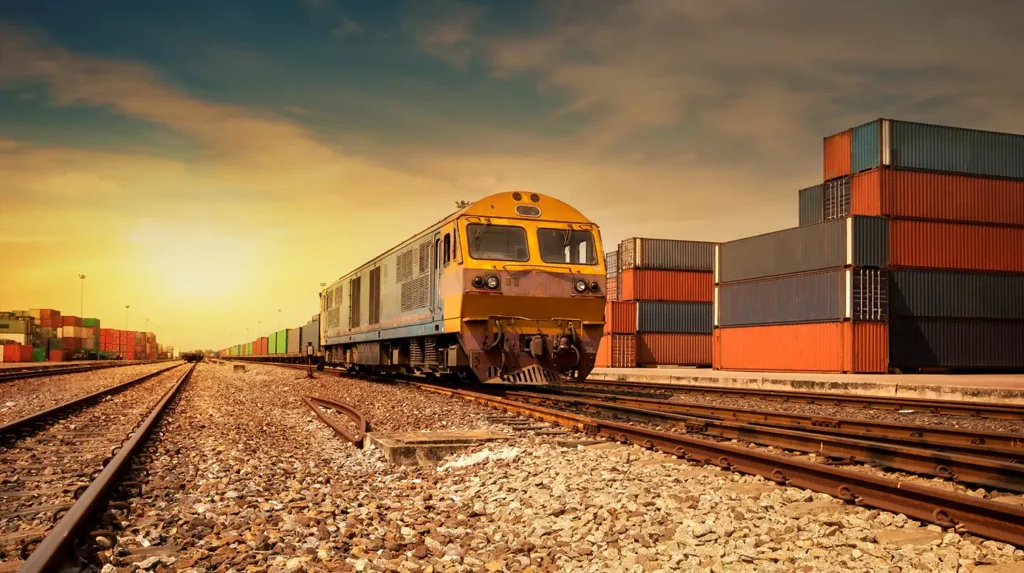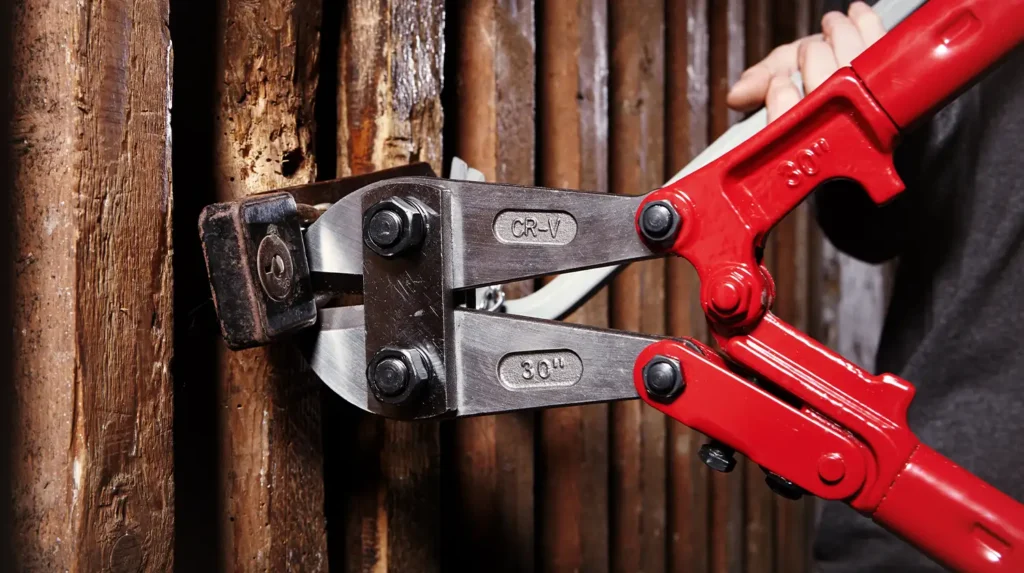In the world of railroad freight transportation, your cargo is exposed to many risks – from physical theft to cyber vulnerabilities. Traditional security measures are no longer enough in an age of sophisticated threats and connected systems.
Modern railroad cargo security requires a holistic approach that bridges cyber and physical security. By combining remote video monitoring, access control, and real-time tracking, rail operators can create a new layer of protection for high-value shipments.
Key Considerations for Cargo Security
- IoT-enabled tracking systems provide for real-time location and condition monitoring
- Advanced access control at loading/unloading zones
- Cybersecurity to help prevent digital intrusion into logistics networks
- Video surveillance with AI-powered threat detection
- Full logging and audit trails for every cargo movement
Understanding Railroad Cargo Theft

Cargo theft is the stealing of goods from commercial shipments which can have severe consequences for businesses including loss of goods, shipment disruption, financial cost, and damaged customer trust. The stats are scary: cargo theft is worth over $30 billion globally each year. There was a 57% increase in 2023. With the complexity of cargo movement and global events making supply chains more vulnerable to theft, it’s time for robust security measures.
Cargo theft is on the rise, especially on the rails. Trains are becoming a new focus for organized crime. Despite road thefts accounting for over a third of all thefts, freight cargo is very attractive to thieves due to the high value and high demand of goods being transported in trains, including electronics, metals, and textiles.
Criminals use all sorts of ways to commit cargo theft including broker fraud, misdirection schemes, and direct theft from transport vehicles.
Cargo Theft Tactics

Cargo theft on railroads is a multi-faceted problem that goes way beyond just stealing. It’s a range of sophisticated tactics that target vulnerabilities in the transportation network. Thieves have evolved to exploit weaknesses in physical security, technology, and pilferage, making cargo protection more and more complex.
Physical Theft
Physical theft remains a big concern. Thieves target unattended railroad cars and strategic locations like switching yards and remote tracks. Electronics, metals, and high-value commodity shipments are the most attractive as these can be converted to cash in minutes with little traceability. Sophisticated criminal networks exploit the vast and sometimes isolated infrastructure of rail, using techniques from simple breaking and entering to more complex misdirection plots.
Strategic Theft
Strategic theft adds another layer of complexity where criminals use advanced fraud techniques to manipulate shipping documentation, impersonate authorized personnel, and create fake pickup scenarios. These methods often require insider knowledge or clever deception to bypass traditional security protocols.
Cyber Theft
Cyber theft is a big threat to railroad cargo security using sophisticated methods to get to your data. Phishing is common in cyber theft scenarios and is used to inject malware into logistics systems. Strong cybersecurity is the key to preventing cyber-attacks in cargo theft. Simulation testing is a proactive cybersecurity measure to identify vulnerabilities before actual attacks. A solid backup plan is key to business continuity during a cyber-attack.
Pilferage
Pilferage is the theft of small amounts of goods over time, often by employees or drivers. Criminals will run a leakage operation, removing goods from shipments without being detected. Inside jobs, including staged hijackings, are a common cause of theft.
Minor theft goes unnoticed until the losses add up because it’s so subtle. High-security rear door locks or good-quality padlocks can help prevent theft.
Modern Train Robberies
Train robberies still happen today, but they’re not like the ones you see in the movies. Thieves target freight cars carrying goods for big companies like Amazon and Walmart. They’re after high-demand items like electronics, commercial products, and raw materials. In the US, the Los Angeles Basin is the hot spot for freight theft, with Detroit, Chicago, and Memphis also being big targets.
In California, a train robbery can get you 16 months to 3 years in prison and up to $10,000 fine. Notable train robberies include The Great Train Robbery (1963) and The Great Gold Robbery (1855), where they stole big time.
Proactive Cargo Theft Prevention Strategies

The hardest part of railroad cargo theft is its adaptability. Criminals are always changing their tactics, so transportation companies must have multi-layered security strategies that combine physical deterrents, technological monitoring, rigorous verification processes, and continuous employee training. Real-time tracking, advanced access control, and full audit trails are essential to combat these increasingly sophisticated theft attempts.
Video Surveillance Systems
Modern freight trains have video surveillance systems to enhance security and deter theft. This includes high-resolution cameras on both the outside and inside of the train to cover all vulnerable areas, as well as audible alarms that sound when someone is detected. The loud alarm is a deterrent in itself, letting the intruder know they have been seen and are being watched. The combination of visual and audible alerts makes it much less likely for a robbery to happen in the first place.
If a theft does happen, the video surveillance footage provides evidence to help police identify and catch the thieves. High-definition cameras provide facial recognition, and the systems can record and store footage remotely, so even if the train is tampered with, the evidence is safe. Many systems are now connected to real-time monitoring centers where security personnel can see the train movement and respond to any suspicious activity and catch the thieves in the act.
Armed Guards and Patrols
To add to the technological security measures, many high-risk freight routes are protected by armed guards and increased patrols. Armed security personnel are on or near the train ready to respond to any threat. These guards are highly trained in security and criminal activity. They provide immediate protection and tell the criminal that attempting a robbery is not only dangerous but highly likely to be met with resistance.
In addition to guards on the train, increased patrols on the critical routes add to the security. These patrols are done by private security companies and law enforcement agencies, officers monitoring areas where thefts are more likely to happen, like isolated rail yards, transfer points, and rural sections of the track. With a higher security presence, the criminal faces a higher risk of being detected and caught, making it harder for them to rob.
Combining remote video surveillance systems with visual and audible alerts and armed guards and patrols, train robberies can be a less attractive option for thieves. The security infrastructure helps ensure companies using the rail can protect their cargo and business.
Employee Training and Background Checks
Background checks can help prevent spoofing and warehouse theft. A full background check should include employment history, criminal record, and references.
Regular security training can help employees spot theft situations. Security protocol training should focus on theft prevention and red flags. Regular audits will allow you to check employee compliance with security protocols.
Law Enforcement Collaboration

Working with law enforcement and industry associations is a united front against railroad cargo theft. Security teams work with law enforcement to investigate and recover stolen cargo.
Local law enforcement provides crime intelligence including trends and hotspots to help prevent cargo theft. Law enforcement can help with cargo theft prevention by providing response protocols and security measures.
Reporting and Investigation Support
Police help during cargo theft incidents by gathering information, interviewing, and coordinating with other agencies to track and recover stolen goods. Their expertise and resources are key to identifying and prosecuting cargo thieves so we can prevent future theft attempts and improve cargo security.
Task Forces
Task forces can help recover stolen goods and disrupt criminal networks. The National Commercial Vehicle and Cargo Theft Prevention Task Force works with many partners to combat cargo theft.
Regular Security Audits
Security audits can help find weaknesses and compliance issues, as well as respond to emerging threats. They can find vulnerabilities, gaps, and weaknesses in your security and allow you to fix them before it’s too late. Audits can also check that employees are following security protocols so you can stay compliant.
Conclusion
New technologies are changing the way we approach railroad cargo security, enabling predictive threat detection and response. By combining physical and digital security, rail operators can reduce the risk of theft, tampering, and unauthorized access.
Protect your shipments, maintain supply chain integrity, and stay ahead of evolving security challenges with a proactive, technology-driven approach to rail cargo protection.
Frequently Asked Questions
u003cstrongu003eWhat is the most common type of cargo theft?u003c/strongu003e
The most common type of cargo theft is straight cargo theft, where goods are stolen from unattended locations like truck yards and warehouses.
u003cstrongu003eHow do businesses deter cyber theft in cargo transport?u003c/strongu003e
Businesses should have strong cyber security protocols, do simulation testing regularly to find system vulnerabilities, and have a full backup plan to help prevent cyber theft in cargo transport.
u003cstrongu003eWhat role does law enforcement play in cargo theft?u003c/strongu003e
Law enforcement plays a big role in cargo theft by helping in investigations, recovering stolen goods, and sharing insights to deter future crimes.
u003cstrongu003eWhy do security audits matter in cargo theft?u003c/strongu003e
Security audits are important in cargo theft as they can find vulnerabilities and help ensure compliance with security protocols.
u003cstrongu003eWhat are some physical security measures to deter cargo theft?u003c/strongu003e
Secure parking, robust fencing, strong lighting, high-security locks, remote video surveillance systems, and intrusion detection systems can help deter cargo theft.u003cbru003e

